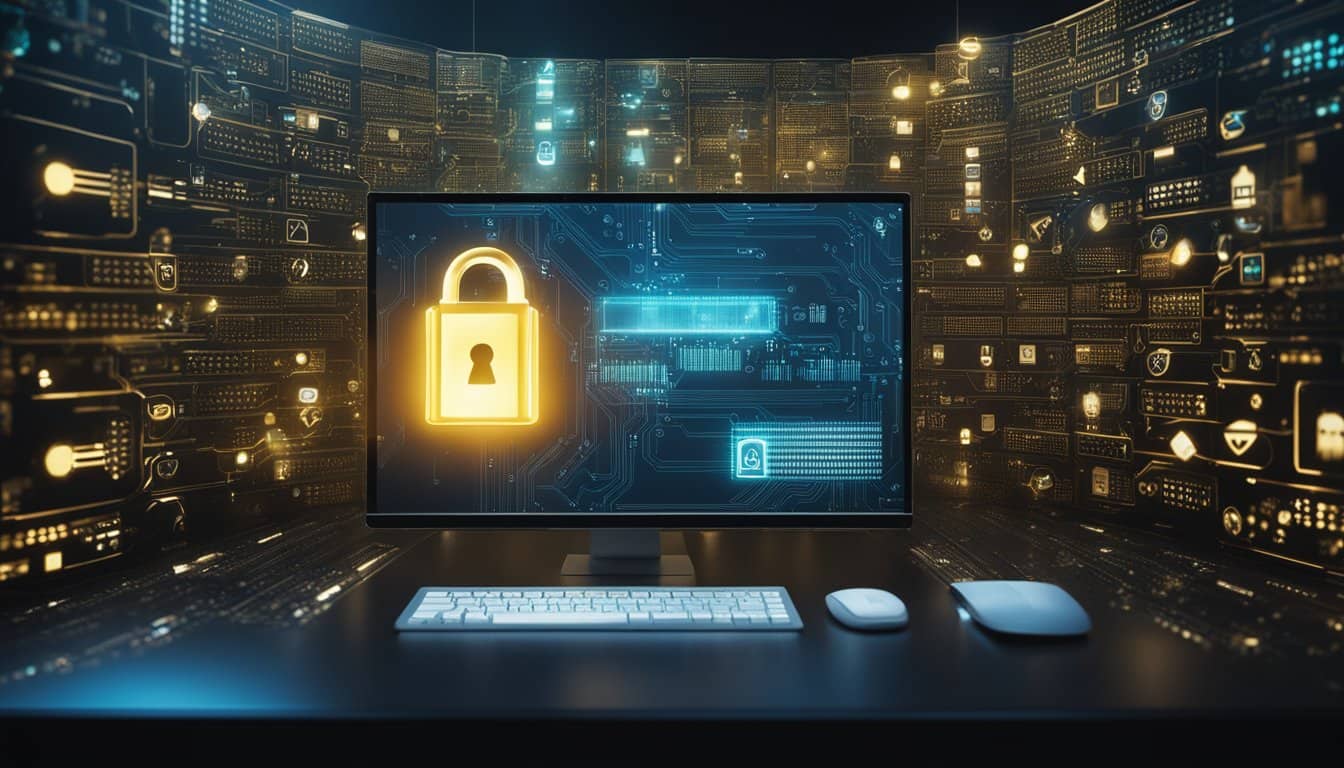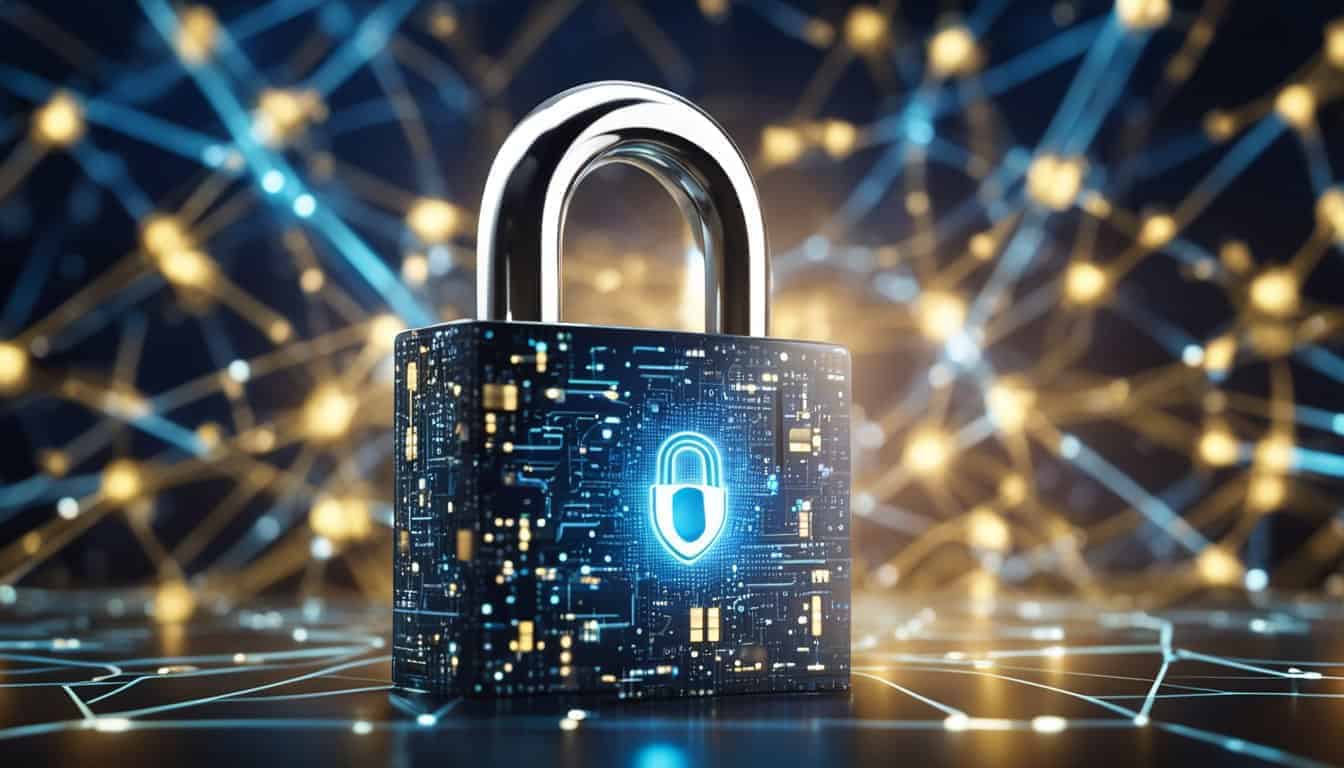Cover Your Cyber “Down Sides”
Cybersecurity is a critical aspect of modern life that affects individuals, businesses, and governments worldwide. As technology continues to advance, so do the methods used by cybercriminals to steal sensitive information, disrupt systems, and cause chaos. Cybersecurity involves protecting electronic devices, networks, and data from unauthorised access, theft, and damage.

Understanding cybersecurity is essential to protect yourself and your organisation from cyber threats. It includes knowledge of the types of cyber attacks, protective measures, best practices, and security technologies and tools used to safeguard against them. Cybersecurity is not just the responsibility of IT professionals but everyone who uses electronic devices and the internet.
Building a culture of security, dealing with cyber incidents, and considering emerging trends and future outlooks are also essential aspects of cybersecurity. In this article, we will explore the basics of cybersecurity, its importance, and what you can do to protect yourself and your organisation from cyber threats.
Key Takeaways
- Cybersecurity is critical in modern life to protect electronic devices, networks, and data from unauthorised access, theft, and damage.
- Understanding the types of cyber attacks, protective measures, and security technologies and tools is essential to safeguard against cyber threats.
- Building a culture of security, dealing with cyber incidents, and considering emerging trends and future outlooks are also essential aspects of cybersecurity.
Understanding Cyber Security

If you use technology, you need to know about cyber security. Cyber security is the practice of protecting your digital assets from cyberattacks. Your digital assets include your data, software, and devices.
Fundamentals of Cyber Security
The fundamentals of cyber security include protecting your data and software from cyberattacks. Cyberattacks can come in many forms, such as malware, phishing, and ransomware. Malware is a type of software that is designed to harm your computer. Phishing is a type of social engineering attack where attackers trick you into giving them your personal information. Ransomware is a type of malware that encrypts your data and demands payment for the decryption key.
To protect your digital assets, you need to be aware of vulnerabilities in your software and devices. A vulnerability is a weakness in your software or device that can be exploited by attackers. You can protect your digital assets by keeping your software and devices up-to-date and using strong passwords.
Common Cyber Threats
There are many common cyber threats that you should be aware of. These include phishing attacks, malware, and ransomware. Phishing attacks are designed to trick you into giving up your personal information, such as your username and password. Malware is a type of software that is designed to harm your computer. Ransomware is a type of malware that encrypts your data and demands payment for the decryption key.
The Importance of Cyber Security
Cyber security is important because it protects your digital assets from cyberattacks. Cyberattacks can cause financial loss, reputational damage, and legal liability. By implementing cyber security measures, you can reduce the risk of cyberattacks and protect your digital assets. Some common cyber security measures include using strong passwords, keeping your software and devices up-to-date, and using antivirus software.
In conclusion, cyber security is an essential practice that everyone who uses technology should be aware of. By understanding the fundamentals of cyber security and common cyber threats, you can protect your digital assets from cyberattacks. Remember to always use strong passwords, keep your software and devices up-to-date, and use antivirus software to stay protected.
Protective Measures and Best Practices

Cybersecurity is a crucial aspect of any organisation, and it is important to take proactive measures to prevent cyber attacks. Below are some best practices and protective measures you can take to keep your network, applications, and information secure.
Developing Strong Security Policies
Developing a strong security policy is the first step in protecting your organisation from cyber attacks. Your security policy should outline the measures and procedures that your organisation will take to protect its network, applications, and information. This policy should include guidelines for creating strong passwords, limiting access to sensitive information, and implementing multi-factor authentication. It should also outline the procedures for responding to a security breach.
Implementing Network Security
Implementing network security measures is essential in protecting your organisation’s network from cyber attacks. Firewalls and encryption are two of the most important network security measures. A firewall is a piece of software or hardware that monitors traffic to and from your network and blocks any traffic that does not meet your organisation’s security policy. Encryption is the process of converting data into a code to prevent unauthorised access.
Application and Information Security
Application and information security are critical in protecting your organisation’s sensitive information. Ensure that all applications are updated regularly with the latest security patches and that they are configured to meet your organisation’s security policy. Additionally, limit access to sensitive information to only those who need it, and implement multi-factor authentication to ensure that only authorised users can access it.
In conclusion, implementing best practices and protective measures is essential in keeping your organisation’s network, applications, and information secure. By developing strong security policies, implementing network security measures, and ensuring application and information security, you can reduce the risk of a cyber attack and protect your organisation’s sensitive information.
Types of Cyber Attacks

Cyber attacks can come in many forms, ranging from relatively harmless to extremely dangerous. In this section, we will explore some of the most common types of cyber attacks that you may encounter.
Malware Threats
Malware is a type of software that is designed to harm your computer or steal your personal information. Malware can come in many forms, such as viruses, spyware, and ransomware. Viruses are programs that can replicate themselves and spread from one computer to another. Spyware is designed to monitor your computer activity and steal your personal information. Ransomware is a type of malware that can encrypt your files and demand payment in exchange for the decryption key.
Phishing and Social Engineering
Phishing is a type of cyber attack that involves tricking you into giving up your personal information, such as your login credentials or credit card numbers. Phishing attacks often come in the form of emails or websites that look legitimate but are actually fake. Social engineering is another type of cyber attack that involves manipulating you into giving up your personal information. Social engineering attacks can take many forms, such as phone calls or fake job offers.
Ransomware and Data Breaches
Ransomware is a type of malware that can encrypt your files and demand payment in exchange for the decryption key. Data breaches are another type of cyber attack that involves stealing your personal information, such as your login credentials or credit card numbers. Data breaches can have serious consequences, such as identity theft and financial loss.
In conclusion, cyber attacks can come in many forms, and it is important to be aware of the different types of attacks that you may encounter. By staying informed and taking steps to protect yourself, you can help prevent cyber attacks and keep your personal information safe.
Security Technologies and Tools

As cyber threats continue to evolve, the need for robust security technologies and tools becomes increasingly important. Here are some of the most essential tools that every cybersecurity professional should be familiar with.
Antivirus and Anti-Malware Software
Antivirus and anti-malware software are essential tools for protecting your computer from viruses, malware, and other malicious software. These tools work by scanning your computer for known threats and removing them. Some popular antivirus software includes Norton, McAfee, and Avast.
Firewalls and Encryption
Firewalls and encryption are two important tools for protecting your computer and network from cyber threats. Firewalls act as a barrier between your computer and the internet, blocking unauthorised access to your system. Encryption, on the other hand, protects your data by converting it into a code that can only be deciphered with a key. Some popular encryption tools include VeraCrypt and BitLocker.
Detection and Remediation Tools
Detection and remediation tools are designed to detect and remove cyber threats that have already infected your system. These tools work by scanning your computer for signs of malicious activity and then removing any threats that are found. Some popular detection and remediation tools include Malwarebytes, Spybot, and AdwCleaner.
Overall, these security technologies and tools are essential for protecting your computer and network from cyber threats. By using these tools, you can ensure that your system is secure and that your data is protected from unauthorised access.
Cyber Security in Different Sectors

Cybersecurity is an essential aspect of modern life, and it affects individuals, businesses, and governments alike. Cyber threats can come from anywhere, and they can be devastating if not adequately addressed. In this section, we’ll explore cybersecurity in different sectors, including enterprise and business security, government and critical infrastructure, and individual and personal security.
Enterprise and Business Security
In the enterprise and business world, cybersecurity is a top priority. Companies need to protect their assets, including customer data, intellectual property, and financial information. Cyber-attacks can lead to reputational damage, loss of revenue, and legal liabilities. Therefore, businesses must take proactive measures to prevent cyber-attacks.
One of the most effective ways to protect your business from cyber threats is to implement robust security protocols. This includes using firewalls, antivirus software, and strong passwords. Additionally, you should educate your employees on the importance of cybersecurity and how to identify potential threats.
Government and Critical Infrastructure
Governments and critical infrastructure are prime targets for cyber-attacks. Cyber-attacks on these entities can lead to significant disruptions, including power outages, transportation disruptions, and communication breakdowns. Therefore, governments and critical infrastructure must take proactive measures to prevent cyber-attacks.
Governments and critical infrastructure can protect themselves from cyber threats by implementing robust security protocols. This includes using encryption, firewalls, and intrusion detection systems. Additionally, governments and critical infrastructure should conduct regular security audits to identify potential vulnerabilities.
Individual and Personal Security
Individuals and personal security are also at risk of cyber-attacks. Cyber-attacks on individuals can lead to identity theft, financial fraud, and other forms of cybercrime. Therefore, individuals must take proactive measures to protect themselves from cyber threats.
Individuals can protect themselves from cyber threats by using strong passwords, avoiding suspicious links and emails, and using antivirus software. Additionally, individuals should be careful when sharing personal information online and should always use secure connections when conducting online transactions.
Overall, cybersecurity is an essential aspect of modern life, and it affects individuals, businesses, and governments alike. By taking proactive measures to prevent cyber-attacks, we can protect ourselves and our assets from potential threats.
Emerging Trends and Future Outlook

As technology continues to advance, cyber threats are becoming more sophisticated and harder to detect. To keep up with this ever-evolving landscape, emerging trends in cyber security are becoming more important than ever. In this section, we will discuss some of the most exciting trends that are shaping the future of cyber security.
The Role of AI and Automation
Artificial Intelligence (AI) and automation are becoming increasingly important in the world of cyber security. By using machine learning algorithms, AI can help detect and respond to threats in real-time, reducing the time it takes to identify and mitigate risks. Automation can also help to streamline operational tasks, freeing up valuable resources and allowing security teams to focus on more complex issues.
Cloud Computing and Security
Cloud computing is rapidly becoming the preferred method of data storage for many businesses. However, with this comes new security challenges. As more data is stored in the cloud, it becomes increasingly important to ensure that it is protected from cyber threats. Cloud security solutions are emerging to help businesses manage these risks, including encryption, access management, and threat detection.
Mobile and IoT Security
As the number of connected devices continues to grow, so does the risk of cyber attacks. Mobile and Internet of Things (IoT) devices are particularly vulnerable to attacks, as they often have weaker security protocols than traditional computing devices. To combat this, new security solutions are emerging, including mobile device management, secure coding practices, and network segmentation.
Overall, the future of cyber security is exciting and full of potential. By embracing new technologies and staying ahead of emerging threats, businesses can ensure that their data and networks remain safe and secure.
Dealing with Cyber Incidents

Dealing with cyber incidents is a critical aspect of cyber security. Cyber incidents can be costly and can result in significant losses for businesses. Therefore, it is essential to have a plan in place to deal with cyber incidents. In this section, we will discuss some of the key aspects of dealing with cyber incidents.
Incident Response Planning
Incident response planning is a critical aspect of dealing with cyber incidents. An incident response plan outlines the steps that you should take in the event of a cyber incident. The plan should include the following:
- A list of key personnel and their roles and responsibilities
- A list of critical systems and data
- Procedures for detecting, reporting, and responding to incidents
- Communication protocols
- Containment and recovery procedures
Having a well-defined incident response plan in place can help you respond to cyber incidents quickly and effectively. It can also help you minimise the impact of the incident on your business.
Disaster Recovery and Business Continuity
Disaster recovery and business continuity planning are essential aspects of dealing with cyber incidents. Disaster recovery planning involves preparing for the recovery of critical systems and data in the event of a cyber incident. Business continuity planning involves preparing for the continuation of business operations in the event of a cyber incident.
To ensure that your disaster recovery and business continuity plans are effective, you should:
- Identify critical systems and data
- Develop procedures for backing up and restoring critical systems and data
- Test your disaster recovery and business continuity plans regularly
Legal and Regulatory Considerations
Legal and regulatory considerations are also critical aspects of dealing with cyber incidents. In the event of a cyber incident, you may be required to report the incident to regulatory authorities or law enforcement agencies. You may also be required to notify affected individuals.
To ensure that you comply with legal and regulatory requirements, you should:
- Be aware of the legal and regulatory requirements that apply to your business
- Develop procedures for reporting cyber incidents to regulatory authorities and law enforcement agencies
- Develop procedures for notifying affected individuals
In conclusion, dealing with cyber incidents is a critical aspect of cyber security. By having an incident response plan in place, preparing for disaster recovery and business continuity, and being aware of legal and regulatory considerations, you can minimise the impact of cyber incidents on your business and protect your assets.
Building a Culture of Security

When it comes to cyber security, building a culture of security is essential. This means that everyone in your organisation should be aware of the importance of cyber security and actively work to maintain it. Here are two key ways to build a culture of security:
End-User Education and Awareness
One of the most important aspects of building a culture of security is educating end-users about cyber security threats. This means that everyone in your organisation should be aware of the risks and how to avoid them. You can achieve this through regular training sessions, workshops, and seminars.
It is also important to keep everyone up to date with the latest threats and trends in cyber security. This can be done through regular newsletters, emails, and other forms of communication. By educating your end-users, you can help to reduce the risk of cyber attacks and protect your organisation’s reputation.
Fostering Partnerships and Trust
Another key aspect of building a culture of security is fostering partnerships and trust. This means working closely with your partners, customers, and other stakeholders to ensure that everyone is committed to cyber security.
You can achieve this by establishing clear policies and procedures for cyber security, and ensuring that everyone is aware of them. You should also work to build trust with your partners and customers by being transparent about your cyber security practices and sharing information about threats and vulnerabilities.
By fostering partnerships and trust, you can build a strong network of allies who are committed to cyber security. This can help to reduce the risk of cyber attacks and protect your organisation’s reputation.
In conclusion, building a culture of security is essential for protecting your organisation from cyber threats. By educating your end-users and fostering partnerships and trust, you can create a strong network of allies who are committed to cyber security. This can help to reduce the risk of cyber attacks and protect your organisation’s reputation.
Cyber Security Challenges and Considerations

As technology continues to advance, cyber security remains a top concern for businesses and individuals alike. With the rise of cybercrime and insider threats, it is important to consider the challenges and potential solutions to protect yourself and your organization. In this section, we will explore some of the key cyber security challenges and considerations that you should keep in mind.
Dealing with Insider Threats
One of the biggest cyber security challenges that organizations face is the threat of insiders. These are individuals who have access to sensitive information and systems within the company, and may use this access for malicious purposes. It is important to have measures in place to monitor and detect any suspicious activity, as well as to educate employees on the importance of cyber security and the potential consequences of insider threats.
To mitigate the risk of insider threats, it is recommended to implement a strong access control policy, which limits access to sensitive information and systems only to those who need it. Additionally, regular security training and awareness programs can help employees understand the importance of cyber security and how to identify and report any suspicious activity.
Balancing Security and Usability
Another challenge in cyber security is finding the right balance between security and usability. While strong security measures are important to protect against cyber threats, they can also be a hindrance to productivity and user experience. It is important to find a balance between security and usability, to ensure that users are not deterred from using the system or application due to overly restrictive security measures.
One way to achieve this balance is to implement a risk-based approach to security, which prioritizes security measures based on the level of risk to the organization. This approach allows for a more flexible and adaptable security model, which can be adjusted as needed to balance security and usability.
Global Cybersecurity Landscape
The global cybersecurity landscape is constantly evolving, with new threats and challenges emerging on a regular basis. It is important to stay up to date on the latest trends and best practices in cyber security, in order to protect yourself and your organization from potential threats.
The National Institute of Standards and Technology (NIST) provides a framework for improving cybersecurity, which includes guidelines and best practices for organizations to follow. By following this framework, organizations can ensure that they are implementing strong security measures and staying up to date on the latest cyber security trends and threats.
In conclusion, cyber security is an ongoing challenge that requires constant attention and adaptation. By taking a proactive approach to cyber security, and implementing strong security measures and best practices, you can help protect yourself and your organization from potential threats.
Conclusion

You’ve now explored the dynamic world of cybersecurity and the critical role it plays in safeguarding digital information. By understanding the various threats and vulnerabilities, you are better equipped to protect your systems and data. Embracing cybersecurity best practices, such as implementing robust firewalls, regular software updates, and employee training, will fortify your digital defences. Remember, staying vigilant and proactive in the face of evolving cyber threats is key to maintaining a secure digital environment.
Frequently Asked Questions

What thrilling roles does a career in cybersecurity encompass?
A career in cybersecurity offers a vast range of exciting roles that are crucial in safeguarding organisations against cyber threats. Some of the roles include Cybersecurity Analyst, Cybersecurity Engineer, Cryptographer, Security Consultant, and Penetration Tester. Each of these roles requires a different set of skills and expertise, but they all share the common goal of protecting organisations from cyber threats.
Can you elucidate the five key categories of cybersecurity?
There are five key categories of cybersecurity, namely, Network Security, Application Security, Information Security, Operational Security, and Disaster Recovery. Network Security involves securing an organisation’s network infrastructure from unauthorised access. Application Security involves securing software applications from cyber threats. Information Security involves protecting sensitive information from unauthorised access, use, disclosure, disruption, modification, or destruction. Operational Security involves securing an organisation’s daily operations from cyber threats. Disaster Recovery involves planning and preparing for the recovery of critical business operations in the event of a disaster.
Is programming knowledge a necessity for a career in cybersecurity?
Programming knowledge is not mandatory for a career in cybersecurity, but it is highly beneficial. Understanding programming languages such as Python, Java, and C++ can help you identify vulnerabilities in software applications. However, having a strong foundation in cybersecurity concepts and principles is more important than programming knowledge.
What essential skills should one possess to excel in cybersecurity?
To excel in cybersecurity, one must possess a range of technical and soft skills. Technical skills include knowledge of operating systems, networking, and programming languages. Soft skills include problem-solving, critical thinking, communication, and teamwork. Additionally, one must have a passion for learning and staying up-to-date with the latest cybersecurity trends and threats.
Why is the significance of cybersecurity paramount in today’s digital era?
In today’s digital era, cybersecurity is paramount because of the increasing frequency and sophistication of cyber threats. Cyber attacks can cause significant financial losses, damage to an organisation’s reputation, and even loss of life. Therefore, it is essential to have robust cybersecurity measures in place to protect against cyber threats.
How can one cultivate cybersecurity awareness to safeguard against threats?
Cultivating cybersecurity awareness involves educating yourself and others on cybersecurity best practices. This includes using strong passwords, regularly updating software and applications, avoiding suspicious emails and links, and being cautious when using public Wi-Fi. Additionally, organisations can conduct regular cybersecurity training and awareness programs to educate their employees on cybersecurity best practices.




